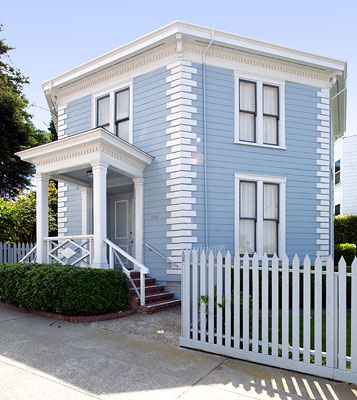San Francisco Landmarks
McElroy Octagon House
2645 Gough Street At Union
Cow Hollow
Built 1861
Phrenologist, Orson Squire Fowler published The Octagon House: A Home For All, or A New, Cheap, Convenient, and Superior Mode of Building in 1848. Fowler maintained that the most efficient shape for a house is a circle, but that an octagonal house is almost as efficient and much easier to build, especially for carpenters of that period with their expertise in bay windows, towers, turrets and other fashionable follies. According to Fowler, octagons enclose more space with less material, provide more light and are more efficiently heated in winter and cooled in summer.
The book led to the construction of several thousand octagon houses in the United States and Canada. Two of these houses survive in San Francisco: the McElroy House, named for William McElroy who built it in 1861 and the Feusier Octagon House, San Francisco Landmark 36. (The extant Marine Exchange Point Lobos Lookout Station was built in 1927 with an octagonal footprint.)
The McElroy Octagon House is also on the National Register of Historic Places as Listing #72000250.
